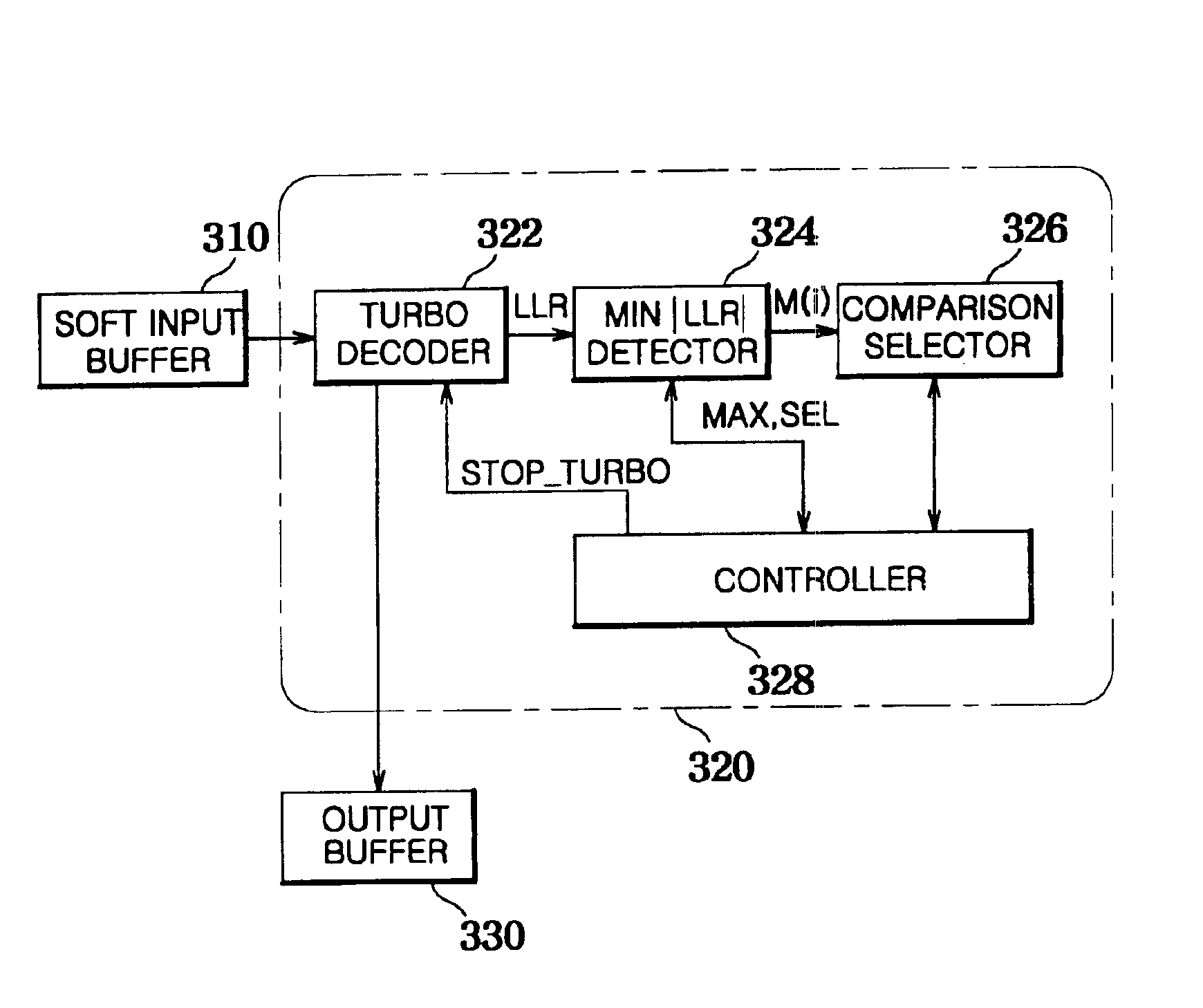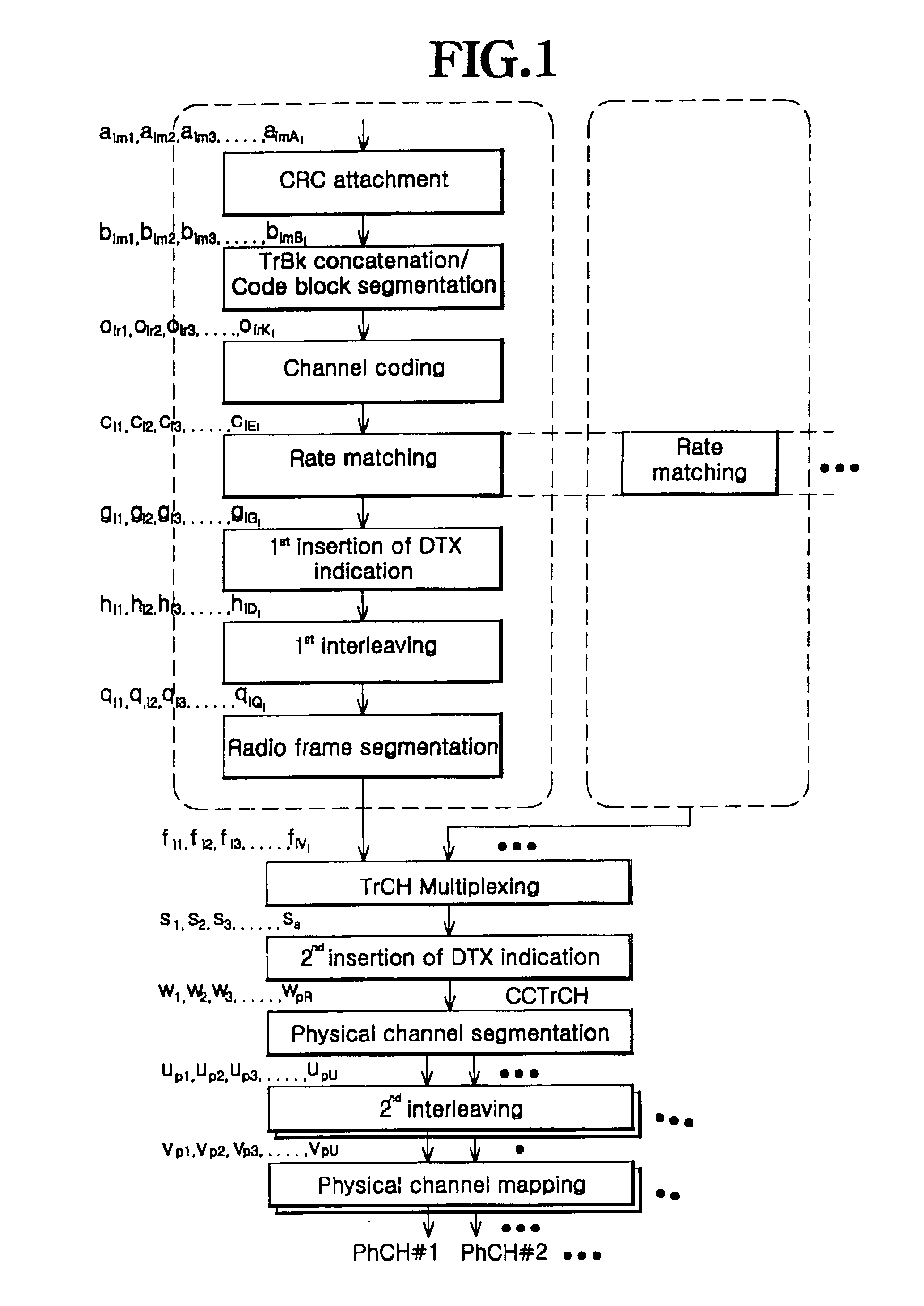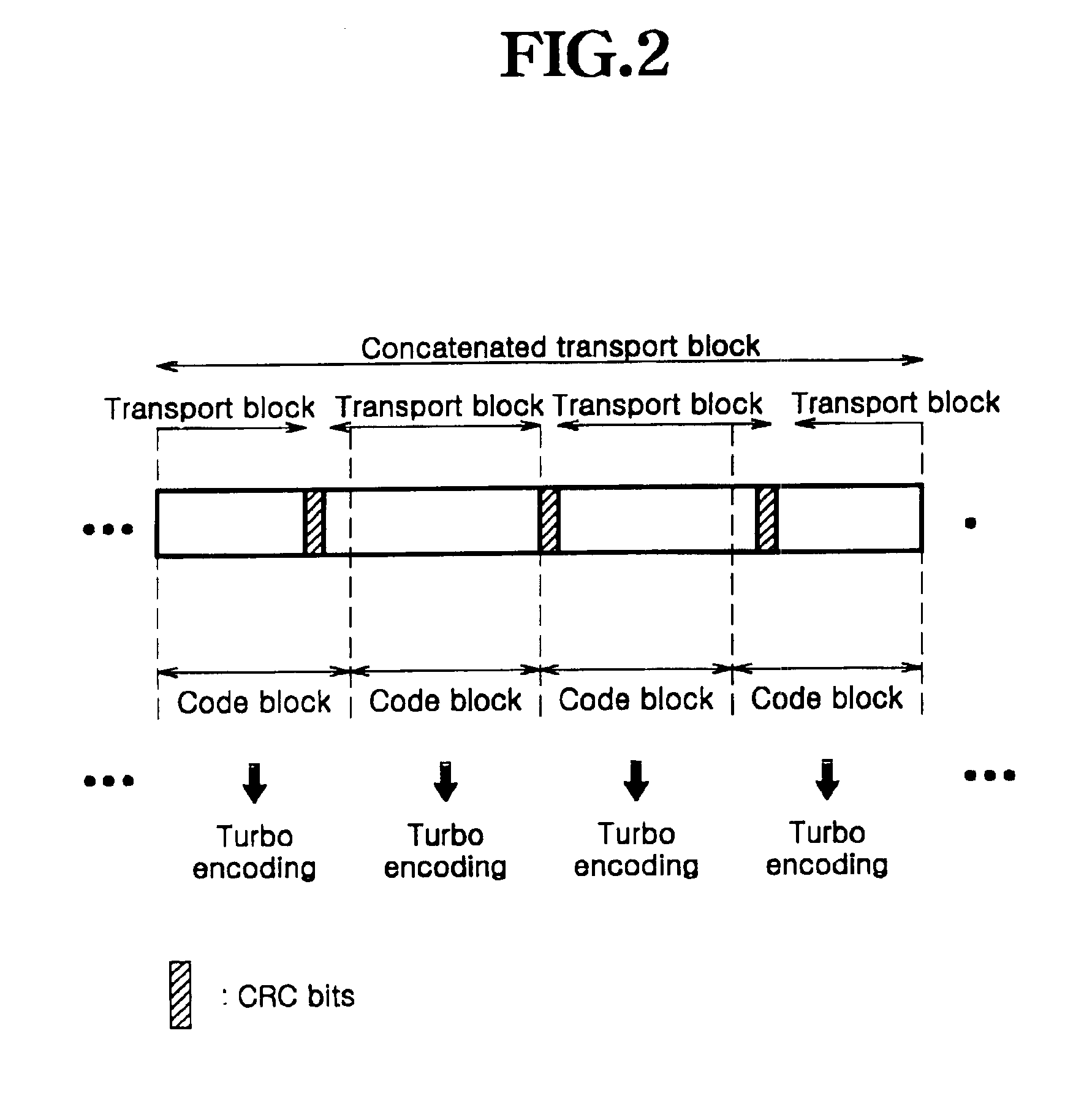Apparatus and method for stopping iterative decoding in a CDMA mobile communication system
a mobile communication system and iterative decoding technology, applied in the direction of coding, amplitude demodulation, code conversion, etc., can solve the problems of reducing transmission efficiency, crc cannot be used as a stopping criterion in the iterative decoding process, and several problems in the crc-based error detection
- Summary
- Abstract
- Description
- Claims
- Application Information
AI Technical Summary
Benefits of technology
Problems solved by technology
Method used
Image
Examples
first embodiment
[0089]Another embodiment of the present invention uses the LLR-based turbo decoding stop scheme along with the existing CRC-based turbo decoding stop scheme in order to obtain improved performance. That is, this embodiment performs both the CRC and the stop test based on the minimum absolute LLR value after decoding a frame once, thereby stopping the decoding if any one of the two stop conditions is satisfied.
[0090]FIG. 6 illustrates a structure of a turbo decoder to which the stopping criterion according to another embodiment of the present invention is applied. Specifically, the turbo decoder supports both the decoding stop scheme according to the first embodiment and the CRC-based decoding stop scheme.
[0091]Referring to FIG. 6, a turbo decoder 610 performs error correction and decoding, through turbo decoding, on an input frame received from a soft input buffer 310. A CRC checker 612 detects an error from every frame using CRC bits for the decoded results from the turbo decoder ...
experiment # 1
[0096]Experiment #1
[0097]A test mode is used where both the first and second turbo decoding stop criteria are used (m_flag=2).
[0098]
Experimental Environment #1AWGN ChannelTurbo encoder: rate 1 / 3, 3GPP RSC encoder Recursive SystematicConvolutional encoder: component encoder for Turbo code, internalinterleaver for Turbo code used in PIL interleaver3GPP, 12 tail bits fortrellis termination, interleaver size FL = 336, 1296, 4096Turbo Decoder: Fixed Point RESOVA Register Exchange Soft OutputViterbi Algorithm: a kind of algorithm for decoding Turbo code,MAX_ITERATION=8Tf = 5, Td = 10, m_flag = 2T1(i) = TfCRC unused
[0099]In the iterative decoding stop algorithm used in Experiment Environment #1, a minimum value obtained by iterating minimum absolute LLR values calculated from a frame is set to 0 (T1(i)=Tf, Fmin=0). Thus, a process for minimizing the Fmin for the second stopping criterion test can be omitted. This is based on the assumption that in the case of the fixed point RESOVA algorit...
experiment # 2
[0109]Experiment #2
[0110]A test based on only the first stopping criterion (m_flag=1) is used along with the CRC-based test.
[0111]
Experimental Environment #2AWGN ChannelTurbo encoder: 3GPP2 RSC encoder (RC5), internal interleaver for Turbocode used in LCS interleaver3GPP2, 12 tail bits for trellis termination,interleaver size FL = {2296, 4600}, 16 bit CRCTurbo Decoder: Turbo decoding algorithm realized by applying Logoperation to MAP algorithm for decoding Fixed Point LogMAPTurbocode, MAX_ITERATION = 8Tf = 2 (m_flag = 1)
[0112]In Experimental Environment #2, if the minimum absolute LLR value satisfies the first threshold by setting the m_flag value to 1, the decoding is stopped after one additional iteration. Further, in Experimental Environment #2, the 16-bit CRC-based stopping criteria and the stopping criteria based on the algorithm according to the present invention were simultaneously used. That is, if the CRC is ‘good’ in iteratively decoding a frame of the turbo code, the deco...
PUM
 Login to View More
Login to View More Abstract
Description
Claims
Application Information
 Login to View More
Login to View More - R&D
- Intellectual Property
- Life Sciences
- Materials
- Tech Scout
- Unparalleled Data Quality
- Higher Quality Content
- 60% Fewer Hallucinations
Browse by: Latest US Patents, China's latest patents, Technical Efficacy Thesaurus, Application Domain, Technology Topic, Popular Technical Reports.
© 2025 PatSnap. All rights reserved.Legal|Privacy policy|Modern Slavery Act Transparency Statement|Sitemap|About US| Contact US: help@patsnap.com



